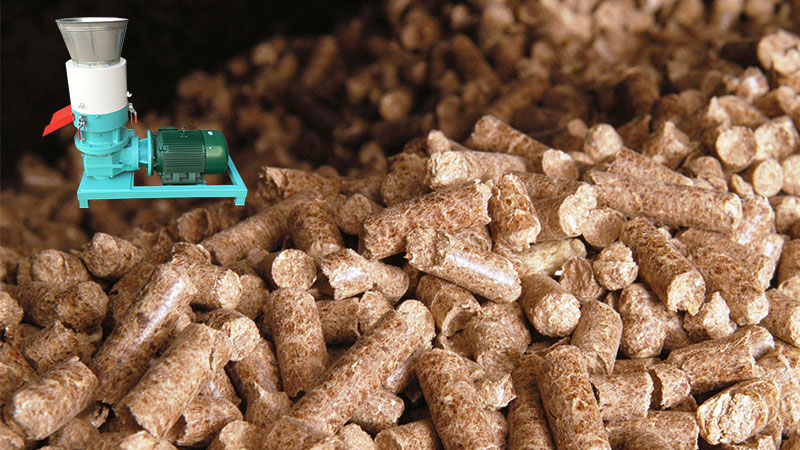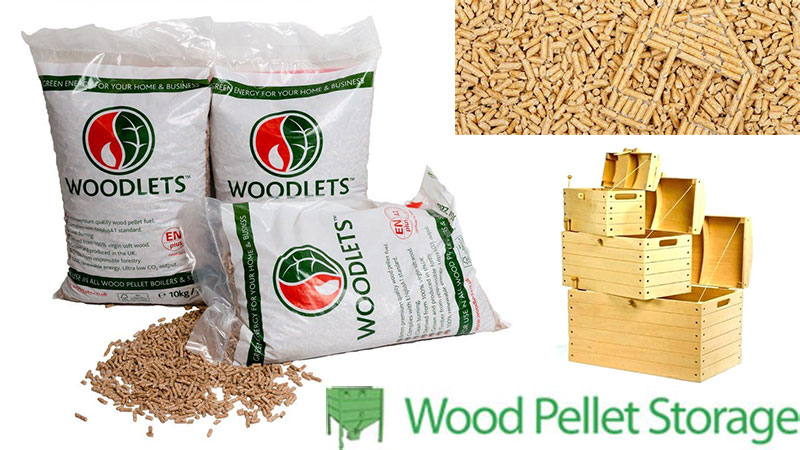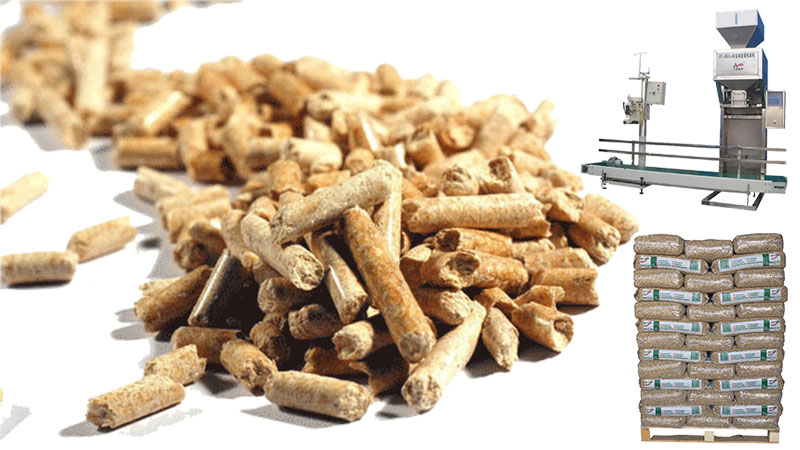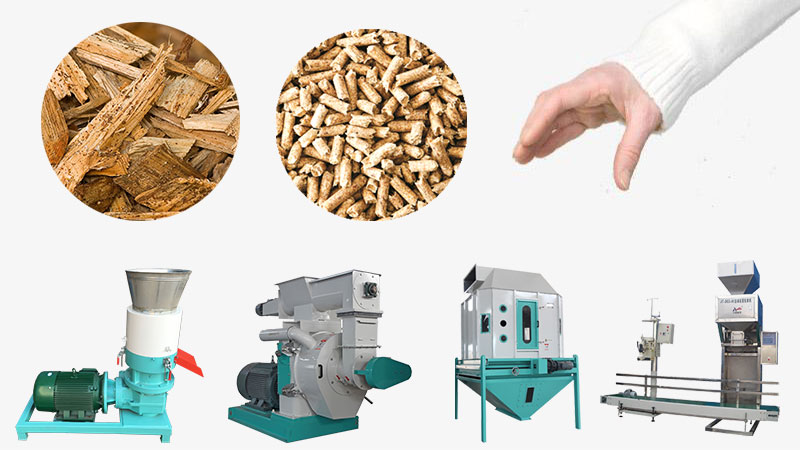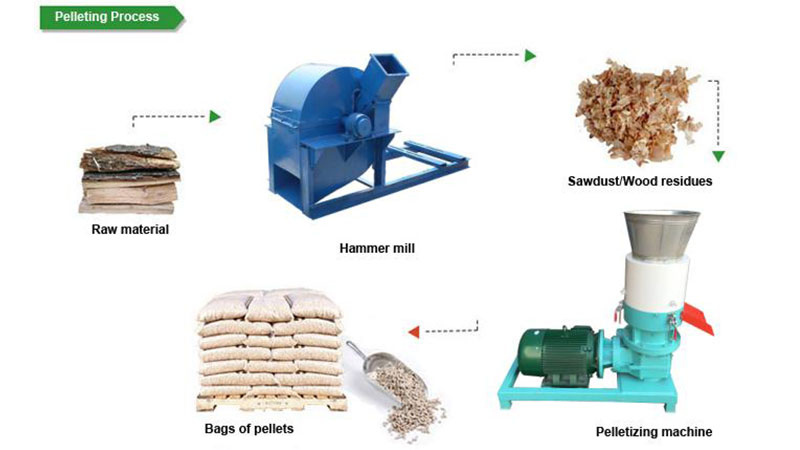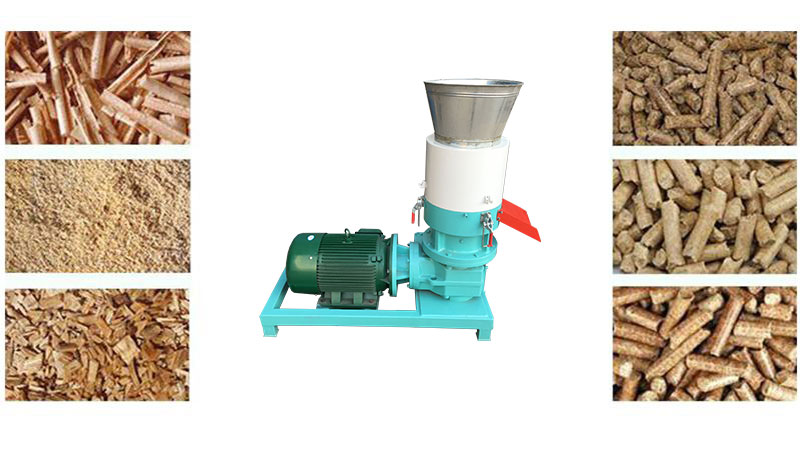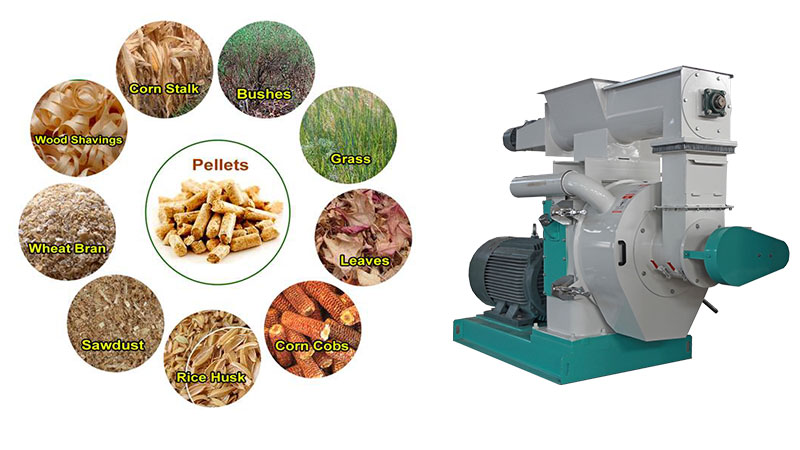 |
Solution for Beech Pellet Making |
1. Introduction
2. Geographic distribution
3.Priorities of beech as biomass fuel
4. Fuel value of beech pellets
5. Beech pellets manufacturing
1. Introduction
Beech is a genus of deciduous trees, native to temperate Europe, Asia and North America. There are almost thirteen distinct species of this genus. The European beech is the most commonly cultivated, whose leaves are entirely or sparsely toothed, from 5-15cm long and 4-10cm broad. They are produced in spring shortly after the new leaves appear. The bark is smooth and light grey.
In terms of the use of beech wood, it is used extensively for furniture framing and carcass construction, flooring and engineering purposes, or in plywood and in household items as an ornamental tree. More importantly, beech wood is a very good firewood, easily split and burning for many hours with bright but calm flames.
2. Geographic distribution
Modern natural habitat of European beech covers considerable part of western and southern Europe. The area of beech forests in Europe forms about 19,5 million hectares.
The common European beech grows naturally in Denmark and southern Norway and Sweden up to about the 57th – 59th northern latitude. In accordance with the materials of a stratum database of State forestry committee of Ukraine, total area of beech forests is 503 thousand hectares. The annual volume of major harvest is 300 thousand m3. The American Beech occurs across much of the eastern United States and southeastern Canada, with a distinct population in Mexico. Besides, east Asia is home to five species of fagus, and Japanese beech is one of the most common hardwoods in its native range.
3.Priorities of beech as biomass fuel
When choosing wood for burning, there are three factors which have an effect on the calorific value (CV) or the amount of available heat per unit of fuel including species choice, wood density and moisture content.
3.1 Type of wood
Whether it is hardwood or softwood, burned in the combustion process is important for the heat value and the energy efficiency. Hardwoods have less resin and burn slower and longer while softwoods burn quickly. Densities and heat values of some common wood species are indicated in the table below. Note that the volume of a stack of firewood varies considerably on whether or not it is split and how it is stacked. The moisture content also plays a significant role. The values below are based on an average moisture content of 20%.
|
Wood
species
|
Moisture
content(%)
|
Density of
dry wood
(1b/ft3)
|
Weight of
dry cord
(1b/cord)
|
Recoverable
heat value of
cord (dry wood)
(millions Btu/cord)
|
Heat value
of cord (green
wood) (millions
Btu/cord)
|
Units of
green wood
needed to
produce 1 million
(cord/Btu’s)
|
|
Beech
|
43
|
44.2
|
3760
|
24
|
16.8
|
0.060
|
|
Black spruce
|
65
|
29.2
|
2480
|
15.9
|
11.1
|
0.090
|
|
Elm
|
58
|
35.9
|
3050
|
19.5
|
13.7
|
0.073
|
|
Norway pine
|
61
|
31.4
|
2670
|
17.1
|
12.0
|
0.084
|
Notes:
·1 ft (foot) = 0.3048 m
·1 lb = 0.4536 kg
·1 Btu (British thermal unit) = 1,055.06 J = 107.6 kpm = 2.931×10-4 kWh = 0.252 kcal = 778.16 ft lbf = 1.055×1010 ergs = 252 cal = 0.293 watt hour
The above table shows that most of the variations in net calorific value (CV) among species are caused by the amount of moisture content and wood density.
3.2 Wood density
A vital part of the viability of biomass as a fuel seems to be density. As hardwood species are generally denser than softwood species, a tonne of hardwood logs will occupy a smaller space than a tonne of softwood logs. Dense woods will burn for longer than less dense woods, which means you will need fewer ‘top ups’ to keep a log stove burning. If you measure wood by volume, you will generally receive more kilowatt hours (kWh) of heat from a cubic metre (m3) of hardwood than softwood. Given the above comparison, we can clearly see that the density of dry beech wood reach the top of 44.21b/ft3 among various wood species, which means beech wood density is suitable for the combustion process.
3.3 Moisture Content
The moisture content of wood has the most effect on CV of any of the variables. Not only does any water in the timber represent less fuel when buying by weight, but it is also necessary to evaporate away before the wood will burn, using some of the fuel energy reducing the net energy released as useful heat. The moisture content of beech is 43%, relatively lower than other wood species, serving as a great advantage over others as biomass fuel.
On top of CV, transportation cost also seems to have a lot of things with the amount of wood density and moisture content in biomass fuel. Transport of the fuel can contribute a large part of the cost, so the higher the density, the greater the weight and the less number of loads are required. This links in importantly with the moisture content which ideally will be fixed as low as possible so that each delivery contains the maximum amount of combustible fuel.Thereby, choosing beech as biomass fuel can reduce transportation cost. Furthermore, as for the combustion emissions, beech, as a kind of classic fuel wood species, is heavy, hard and compacted. It does follow that beech burns long producing a small amount of smoke.
4. Fuel value of beech pellets
Biomass, as a fuel, is the plant material that can be burnt to produce renewable heat or electricity. It utilises the sun’s energy stored during plant growth which is later released when it is burnt. Traditionally, wood logs have been the most commonly used as the biomass fuels, but other forms of wood have now increased in popularity such as pellets, chips and briquettes.
The following table shows how a tonne of beech pellets compares with beech on an energy basis for typical moisture contents supplied. The calorific output value (Gigajoules, GJ) is used to measure how much energy is contained in the different fuels, while the energy content (kilowatts per hour, kWh) is a measure of the rate at which energy is produced. Because plant biomass naturally contains water, this reduces the output compared to fossil fuels such as oil and coal. Therefore, the amount of water in the biomass is essential for the energy output of the fuel: water content must be minimized by proper drying and storage and maintained at a constant level to avoid fluctuations in energy output when burnt. Heating oil is very energy dense, and a smaller mass of oil is needed to give the same energy output as biomass.
|
Materials
|
Water content(%)
|
Calorific value(GJ)
|
Energy content(kWh)
|
Heating oil equivalent(kg)
|
|
Beech(naturally dried)
|
35
|
11.1
|
3085
|
259
|
|
Beech pellets(kiln dried)
|
<10
|
17.0
|
4725
|
396
|
Given the above analysis, we can easily see the priorities of beech pellets over beech as biomass fuel. Through pelletization, beech pellets have a lower water content and higher calorific value.
With the modern technological process of pelleting process, a higher density and lower moisture content are reached, which allows a higher calorific value. Biopellet is reflected in lower fuel consumption and reduced waste during the heating season. When fossil fuels are burnt in air, they release the carbon they stored underground into the atmosphere as carbon dioxide (CO2). In contrast, when biomass fuels are burnt they release the carbon stored during growth, but reincorporate that carbon into the plant during the next growth cycle. The result is less additional carbon dioxide in the atmosphere with biomass fuels. Beech pellets contain no additives or binders of non-plant origin, so the ash content is very low. Also, beech pellets are standardized, which enables us to automate the entire fuel system and complete combustion quality.So, use beech pellets as biomass fuel, and you and your boiler will be grateful.
5. Beech pellets manufacturing
Pellets are small cylindrical pressed bodies. The raw material is composed of residual wood such as wood shavings or sawmill residuals left in their natural state. Typical wood pellet manufacturers are large pelleting mills.
The quality of the raw materials used has a decisive influence on the quality of wood pellets. In order to ensure the pellet quality required, scrupulous preparation and processing of the raw material are of extreme significance. The production of wood pellets therefore places great demands on the manufacturing process. How beech pellets are made in a pellet plant? Generally, it will go through the following procedures:
*Chipping and crumbling: the size of material is a pivotal factor influencing pelletization. Generally, size of material for pelletization remains about 4mm or 5mm and pellet diameter is either 6mm or 8mm. Therefore, oversized material cannot pass through pellet mill ring die pores smoothly and cannot be squeezed via ring die pores. On the other hand, pellet mill performance will stay unstable with electric current fluctuating, which is harmful to pellet mill and the quality of pellets will also be affected adversely. Hence, material should be cut in size with either wood chipper, wood crusher or hammer mill.
*Screening: impurities such as stones, metals or others will be screened out of raw materials.
*Drying: moisture content of material will exert a deciding impact upon the quality of pellets. According to statistics and our experience, moisture content of 13%-15% is commonly suitable for a variety of raw material species. Excessive moisture content of raw material cannot be pelletized and material will stick together like paste. Not only will efficiency of the pellet mill be affected, but also the required quality of the pellets will be harmed as well. Through drying in the drum dryer, the desired moisture content will be made.
*Mixing: to secure the stable performance of the pellet mill, we should know whether we are supposed to mix different kinds of materials together. Because materials are bound to be blended proportionately and thoroughly. Otherwise, pellet mill has to be forced to chew different materials from one kind to another, which triggers choking or burping of pellet mill, namely unstable running and noisy sound. Normally, pellet mill during working has no noise produced. Therefore, we should have different materials mixed decently so that a smooth pellet production can be achieved. That is to say, a mixer will enhance performance of the pellet mill.
*Pelletizing: after preparation of the raw material, beech is conveyed by an auger to the presses in the pellet mill. Special rollers press the material through the holes of the flat bed matrix. Hot pellets are cut to the specified length. Wood consists mainly of the constituents lignin and cellulose. As a result of the pressure during the pressing process, the lignin becomes adhesive and encases the cellulose fibres. By this means, pelletization is possible without the addition of binding materials.
*Cooling: hot extruded pellet will be hardened and strengthened after air cooling in a cooler.
*Package: pellets are packaged into bags for the sake of pellet protection and convenient distribution by an automatic packing system.
*Storage and distribution: pellets should be kept in dry conditions and be stored in tanks, contains or silos. Pellets are distributed in bags or in bulk form by truck or other vehicles.
